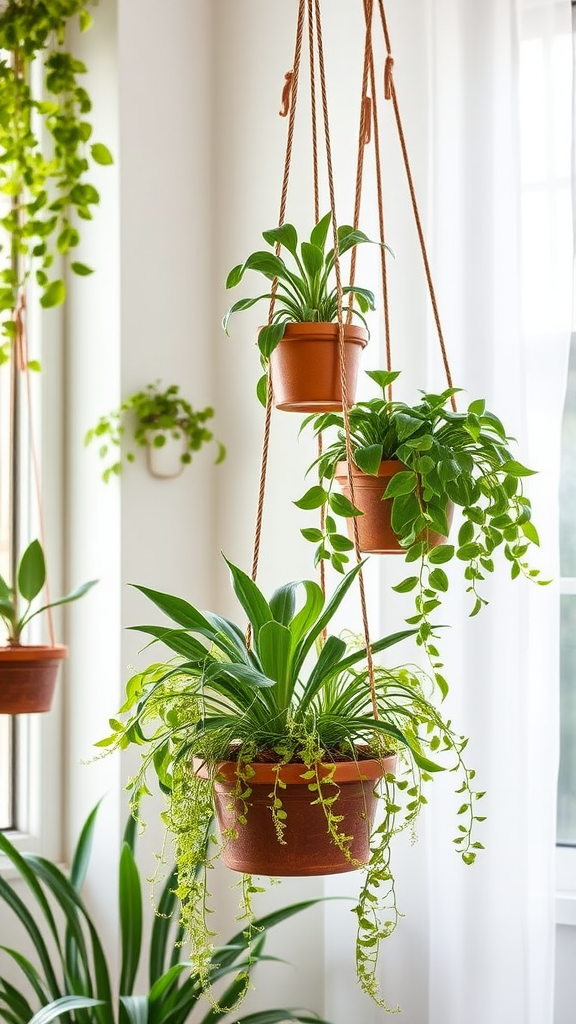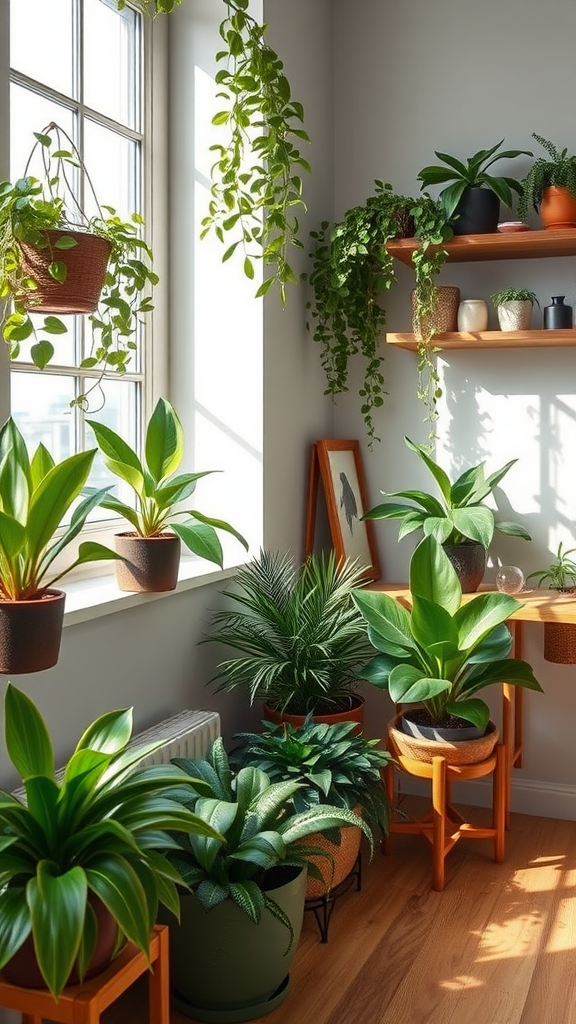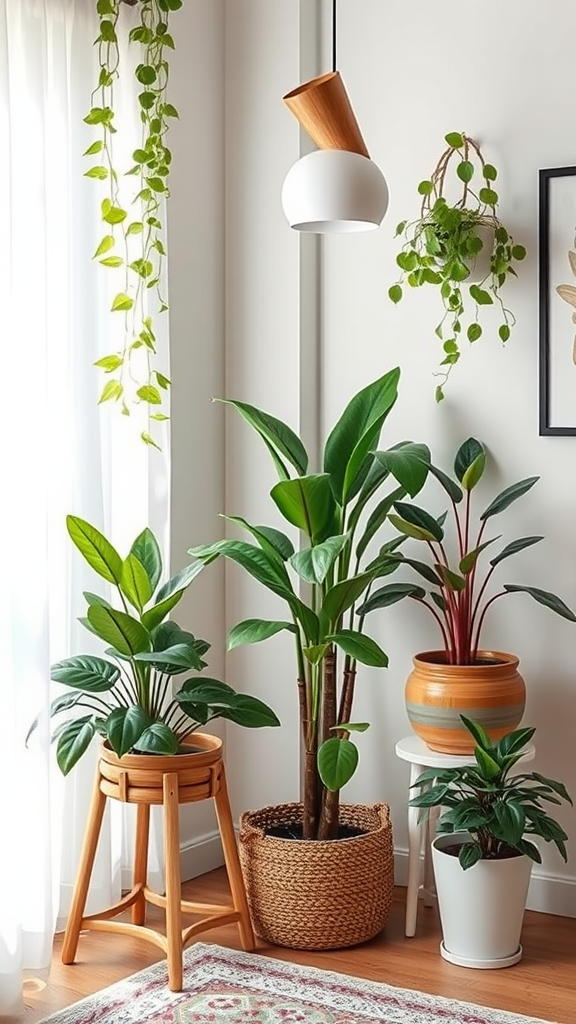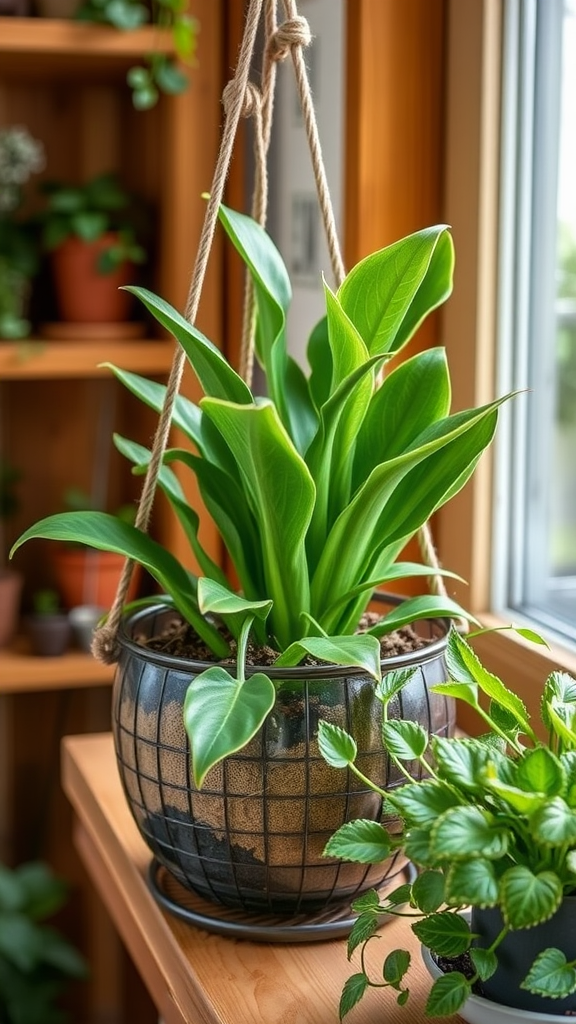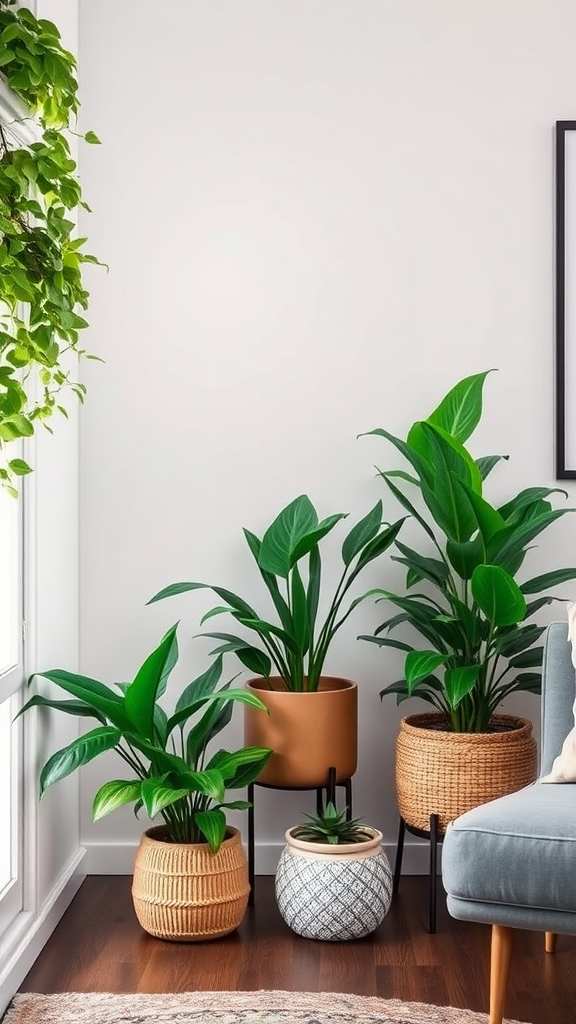Seven Hanging Plants That Will Transform Your Space: A Complete Guide to Choosing the Right Ones
Hanging plants are an excellent way to breathe life into your home, adding a touch of nature without consuming precious floor space. If you’re looking to transform your space, consider incorporating some of these beautiful and easy-to-care-for hanging plants into your decor. Each of these options has unique characteristics that can complement different styles and settings.
1. Pothos
Pothos is a classic choice for indoor spaces. This hardy plant is known for its heart-shaped leaves that come in varying shades of green and yellow variegation. Pothos thrives in low light and is forgiving when it comes to watering, making it ideal for beginners. You can hang it in a macrame plant hanger or let it trail down from a high shelf. Its ability to purify the air adds an extra layer of benefit to its beauty.
2. Spider Plant
The spider plant is another low-maintenance beauty, featuring graceful, arching leaves with green stripes. It produces “babies,” or offshoots, that can be easily propagated. Hanging spider plants not only provide greenery but also make a visually appealing display when the babies cascade down. They thrive in indirect sunlight and require minimal care, perfect for busy lifestyles.
3. String of Pearls
This succulent is characterized by its long, trailing strands of round leaves that resemble pearls. The string of pearls is a stunning choice for a hanging planter. It loves bright, indirect light and requires little water, making it ideal for those who might forget to water plants regularly. However, be careful not to overwater it, as it can lead to root rot.
4. Boston Fern
If you’re seeking lush greenery, the Boston fern may be the perfect option for you. With its feathery leaves and bushy appearance, this plant adds a tropical feel to your space. Boston ferns prefer a humid environment, thriving in bathrooms or kitchens. They also do well in shaded areas, making them versatile décor options for hanging baskets.
5. Tradescantia (Wandering Jew)
Tradescantia is known for its vibrant purple, green, and silver foliage. This plant can bring a splash of color to your hanging displays. It enjoys bright, indirect light but can adapt to lower light conditions. The stems are delicate and can make for strikingly beautiful cascading arrangements. Be aware that this plant may spread quickly, so regular pruning is recommended to maintain a desired size.
6. English Ivy
English ivy is a dramatic hanging plant that can add a touch of elegance to your home. Its lush, trailing vines can grow quite long, providing a stunning visual effect when hung from a shelf or in a decorative planter. While it enjoys bright light, English ivy can also tolerate partial shade. It’s known for its air-purifying properties, making it an excellent option for improving indoor air quality as well.
7. Philodendron
With its heart-shaped leaves and vining nature, the philodendron is a stylish addition to any interior. This plant thrives in a range of lighting conditions from low light to bright, indirect sunlight. It is very forgiving with watering; let the soil dry out between waterings for the best care. Philodendrons can lend a modern touch to your space, making them perfect for contemporary and bohemian decor alike.
When selecting hanging plants, consider your space’s lighting conditions and the care level you’re committed to providing. Each of these plants has its own enchanting charm and can significantly enhance your decor, providing both beauty and air-purifying benefits.
By adding any of these seven hanging plants to your living area, you’re not just filling your space with greens; you’re creating a serene atmosphere that’s inviting and refreshing. Transforming your home into a green haven can be as simple as investing in the right plants and letting them flourish.
Embrace the latest trend in home decor by welcoming the greenery into your life. Whether you choose one or all seven of these stunning plants, you’ll be sure to elevate your interior while enjoying the many benefits they bring.
Tips for Caring for Your Hanging Plants to Keep Your Space Vibrant and Lush
If you’ve decided to bring nature indoors with hanging plants, you’re on your way to transforming your space into a vibrant oasis. With the right care, these green beauties can thrive and elevate the look of any room. Let’s explore essential tips to help you care for your hanging plants and keep them lush.
Choose the Right Location
One of the first steps in caring for your hanging plants is selecting the right location. Keep in mind that different plants have different light requirements. Here are some tips:
- Bright Indirect Light: Many hanging plants thrive in bright, indirect light. Place them near windows with filtered sunlight.
- Avoid Direct Sunlight: While some plants can tolerate direct sunlight, others may scorch. Watch your plants for signs of stress.
- Low Light Options: If your space has low light, consider plants like pothos or spider plants that can adapt well to dim conditions.
Water Wisely
Watering is crucial for the health of your hanging plants. Too much or too little water can lead to issues. Here’s how to get it right:
- Check Soil Moisture: Before watering, stick your finger about an inch into the soil. If it feels dry, it’s time to water.
- Even Watering: Ensure water drains out of the bottom to avoid root rot. Do not let your plants sit in standing water.
- Seasonal Adjustments: Remember that plants may require less water in winter, so adjust your schedule accordingly.
Feed Your Plants
Nourishment is key to maintaining vibrant hanging plants. Fertilizing them properly will encourage growth and blooming:
- Use a Balanced Fertilizer: Opt for a balanced, water-soluble fertilizer during the growing season. Follow the instructions for mixing and frequency.
- Feed Less in Winter: Plants generally need less fertilizer in the winter months when they are dormant.
- Organic Options: Consider organic liquid feeds for a more natural approach to fertilizing.
Humidity Matters
Indoor air can be dry, especially in winter, which may affect your hanging plants. Increasing humidity can help maintain their health:
- Group Plants Together: Placing your plants close can create a microclimate with higher humidity.
- Use a Humidifier: For plants needing extra moisture, consider investing in a humidifier.
- Misting: Lightly misting your plants can increase humidity, but avoid overdoing it to prevent mold growth.
Pruning and Maintenance
Routine maintenance is essential for keeping your hanging plants healthy. Here’s what you should consider:
- Regular Pruning: Trim away any yellow or dead leaves to promote new growth and maintain appearance.
- Dust the Leaves: Clean the leaves periodically to remove dust, which can prevent them from absorbing light effectively.
- Repot When Necessary: If your plant outgrows its pot, it’s time to repot. Choose a slightly larger pot that offers good drainage.
Watch for Pests
Keep an eye out for pests that can harm your hanging plants. Here’s what to do:
- Inspect Regularly: Check the underside of leaves and stems for signs of pests like aphids or spider mites.
- Use Natural Remedies: If you find pests, try using a mixture of water and mild soap for treatment.
- Isolate Infected Plants: Quarantine any plants showing signs of pests to prevent infestations from spreading.
By following these tips, your hanging plants will not only survive but thrive, bringing joy and vibrancy to your living space. Remember, caring for plants is a journey of learning, so take time to understand their needs. Each plant is unique, and with your dedication, your indoor garden will flourish.
Conclusion
Transforming your space with hanging plants not only enhances the ambiance but also brings a touch of nature into your home. With the seven featured hanging plants, you can effortlessly infuse your environment with life and color. By choosing plants like the classic pothos or the show-stopping string of pearls, you create focal points that draw the eye and add a layer of depth to your decor.
Caring for these plants is crucial to maintaining their health and vibrancy. Regular watering, appropriate light conditions, and occasional feeding can keep them thriving. Don’t forget to clean the leaves to remove dust and enhance their photosynthesis capability. By staying attentive to their needs, you can ensure that your hanging plants remain lush and eye-catching.
Whether you’re looking to create a calming indoor oasis or a lively artistic display, these seven hanging plants offer versatility and charm. So go ahead, explore your options, and choose the plants that resonate with your style and space. Your living area can transform into a lush sanctuary that captivates not just your eyes but also your spirit. With the right plants and a little bit of care, you can enjoy the many benefits of a greener, more inviting home atmosphere. Now is the perfect time to get started on your hanging garden adventure!

